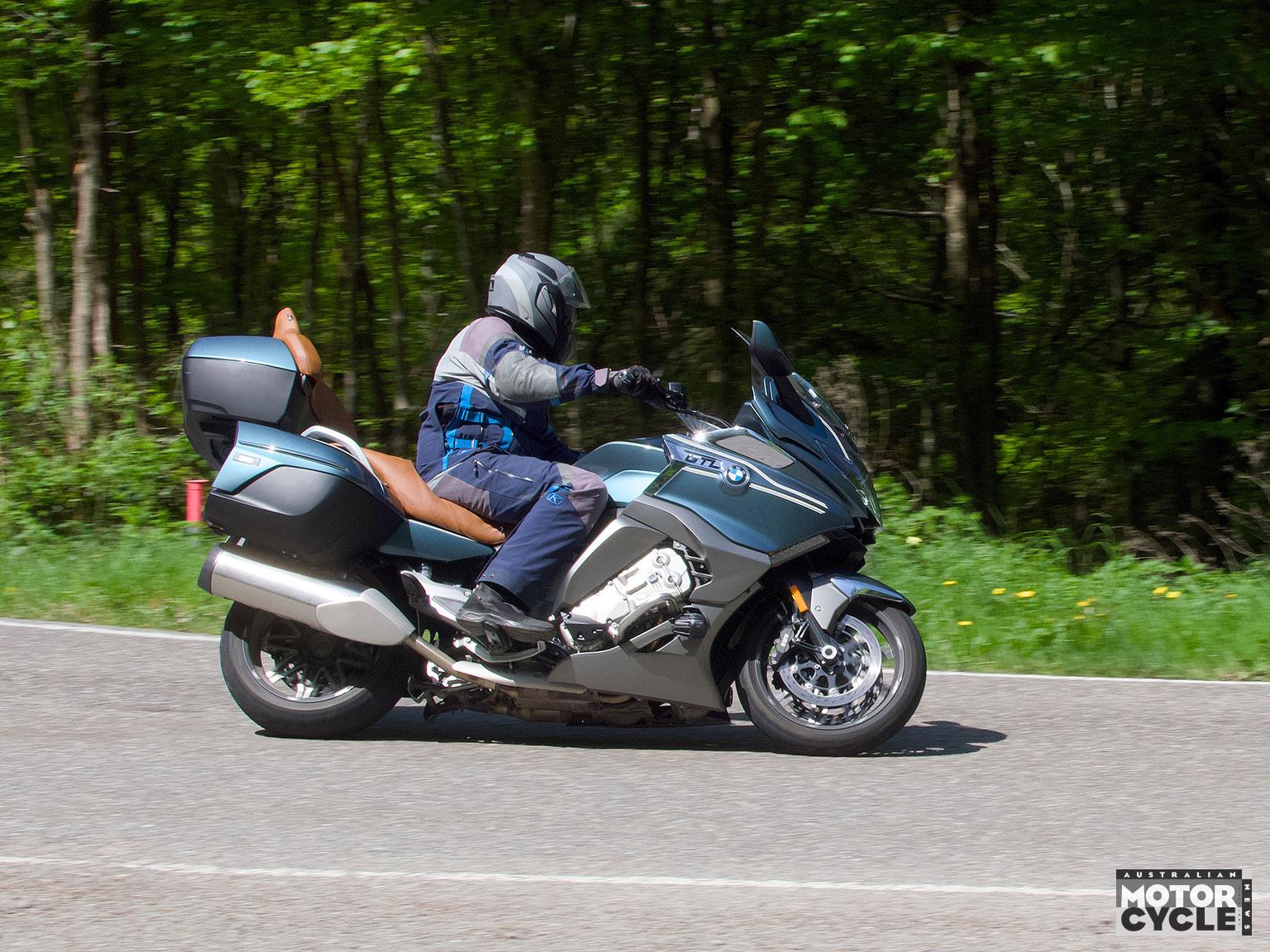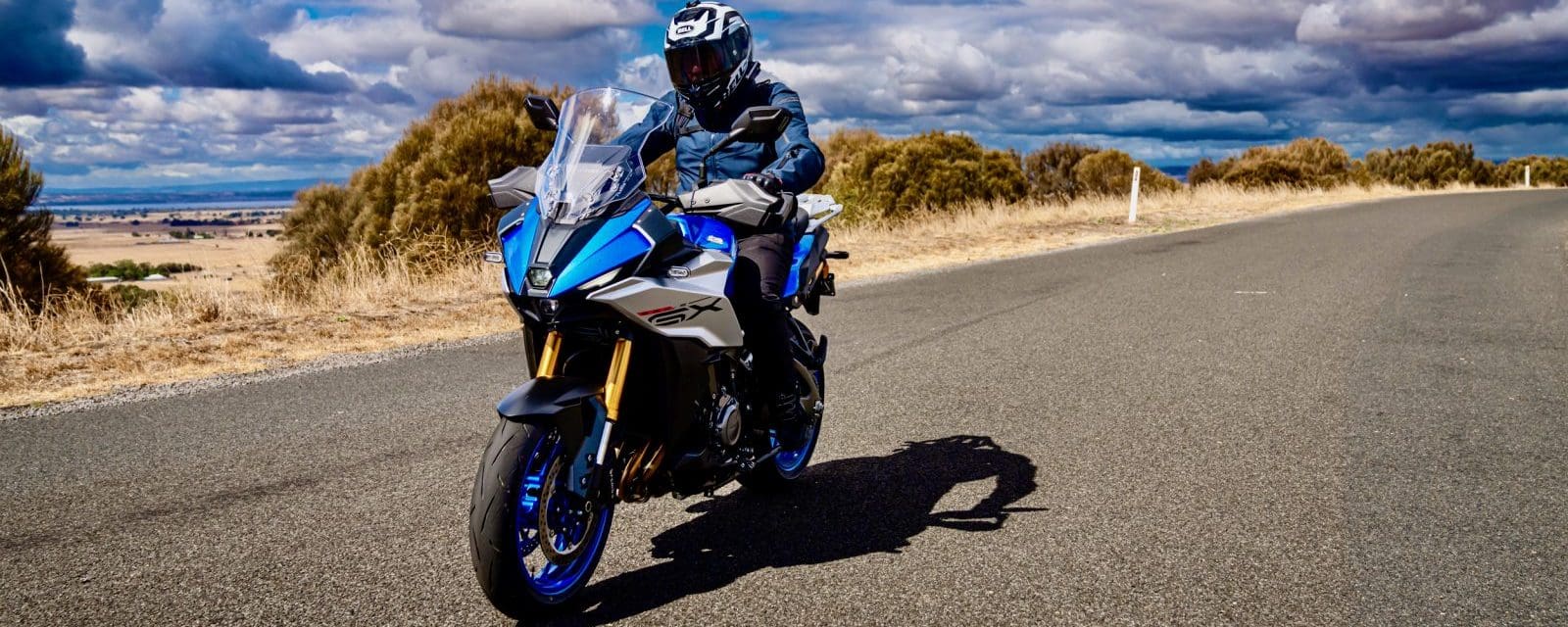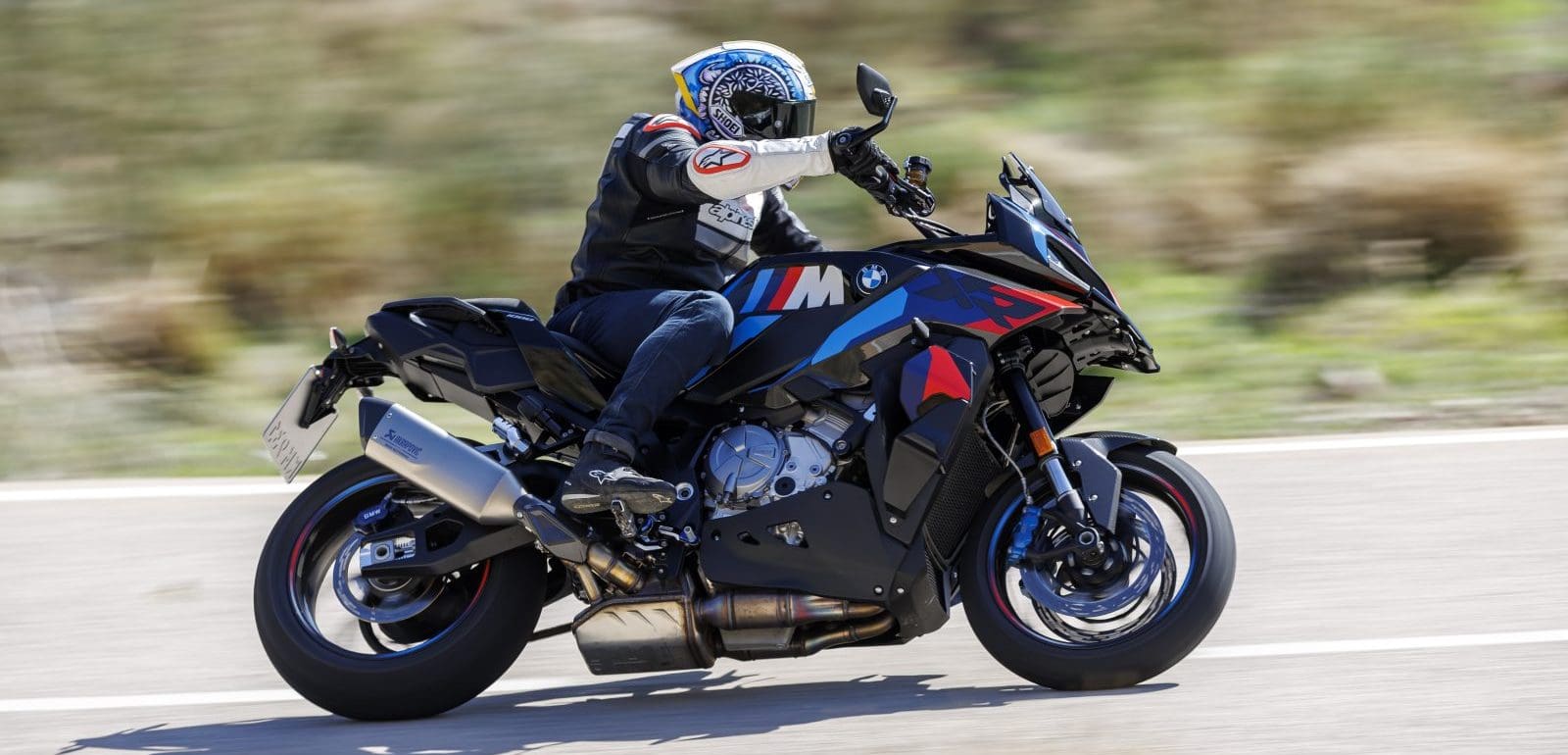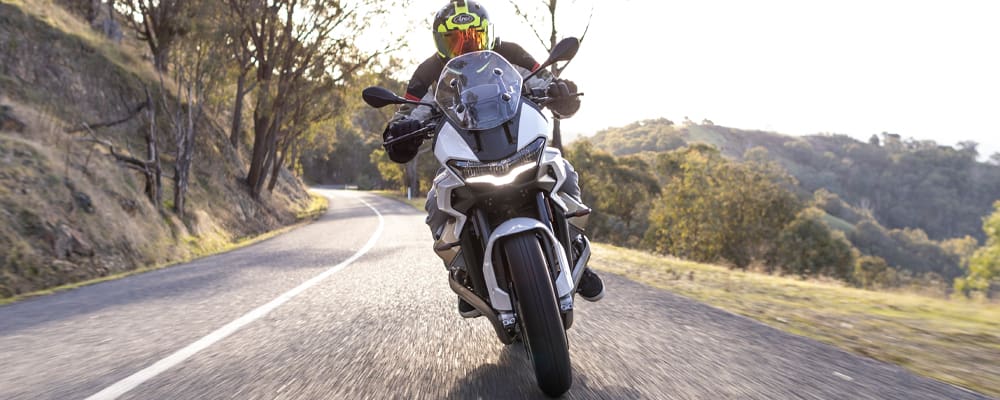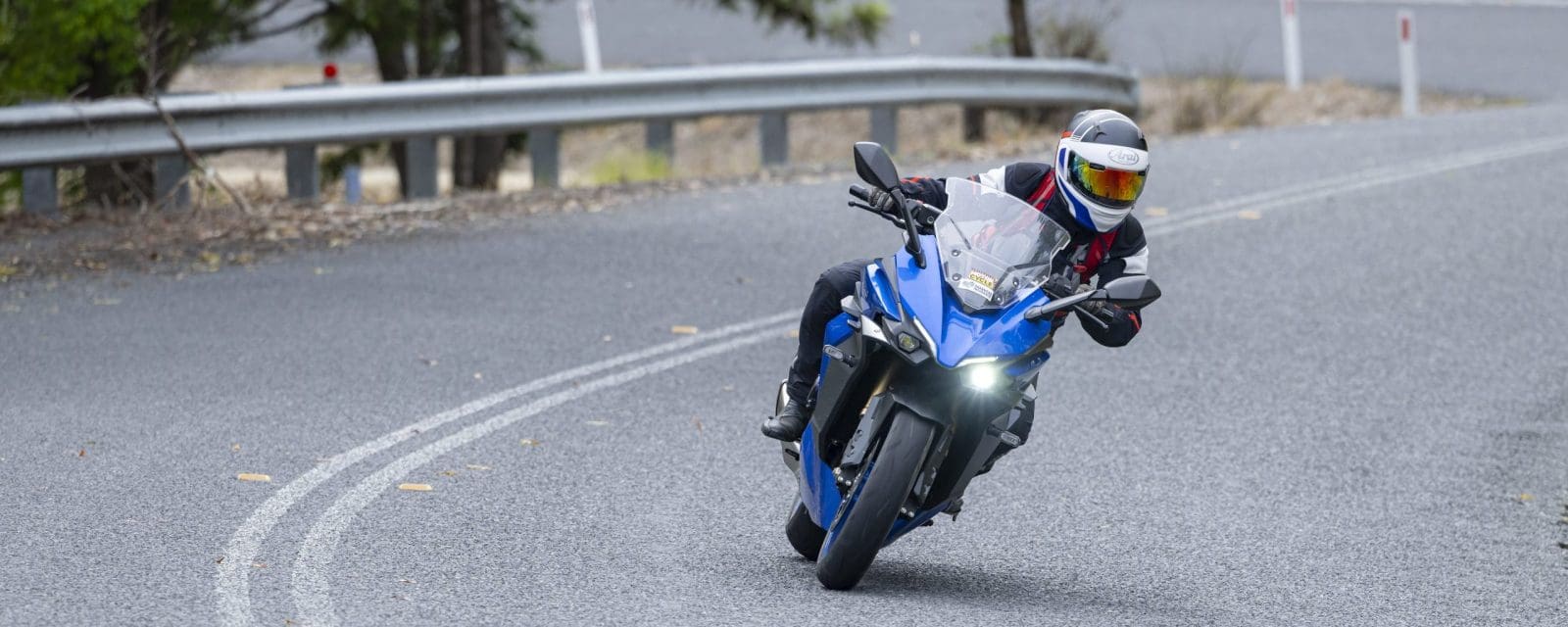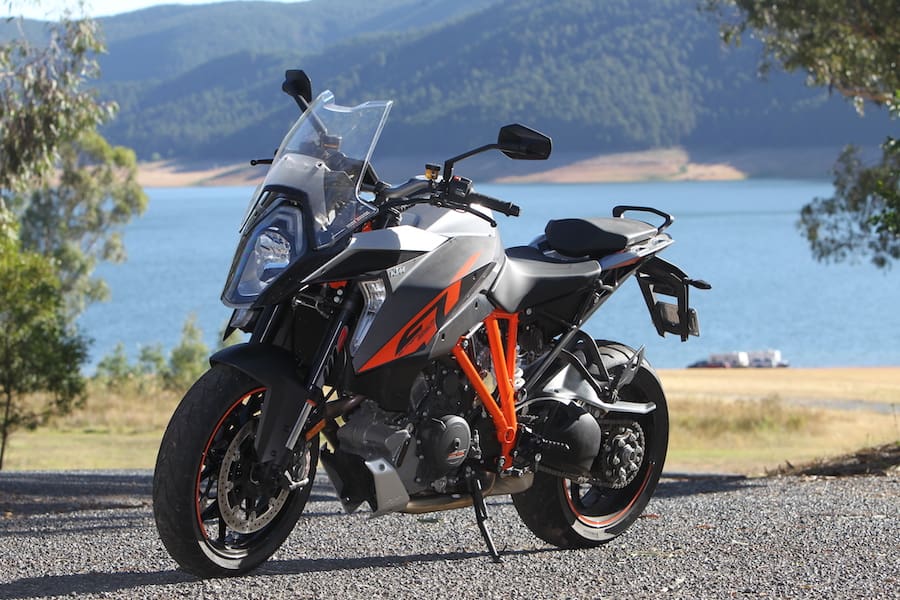Yamaha’s highly commended Tracer 9 GT sports-tourer was launched back in 2021 during the global pandemic, meaning I missed the opportunity to test ride the then-new model. Everyone I spoke to who had ridden the GT praised it, so I had high hopes for the new 2023 Tracer 9 GT+, which gains a huge spoonful of new tech plus some smart updates.
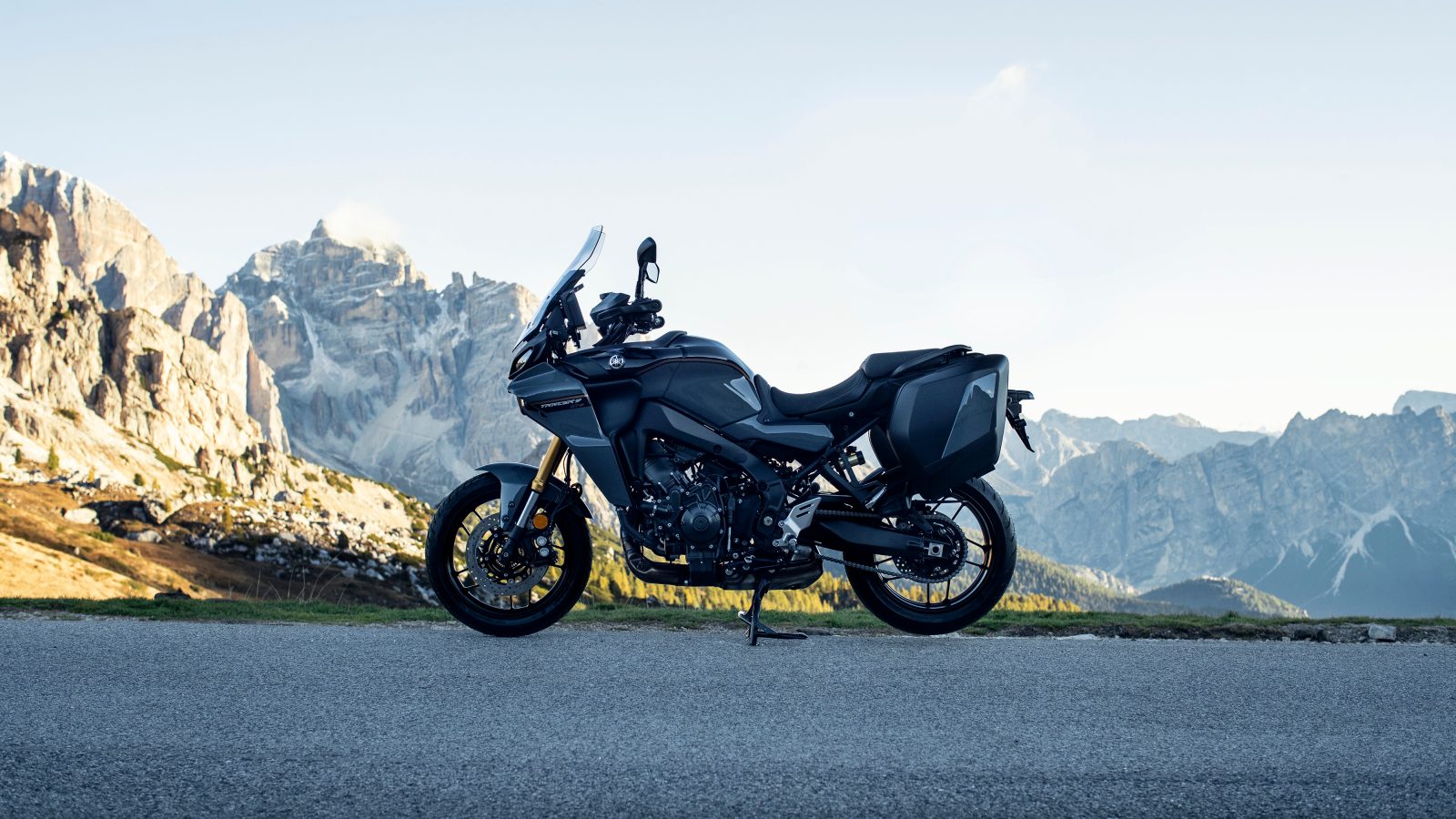
The headline tech is the introduction of Radar Linked Unified Braking System – a world first – and, for the first time on a Yamaha, adaptive cruise control, hence the large radar at the front. But that’s not all: a new seven-inch TFT display, slick new switchgear, a larger rear disc (for the new braking system), a new seat design and a new quickshifter all debut on the 890cc triple.

Yamaha has left the excellent, charismatic 890cc CP3 triple alone. That means the same peak of 87.5kW (117hp) as before with the same 93Nm (at 7000rpm) peak torque figure, too. A third-generation, two-way quickshifter that allows you to downshift with the throttle still open is new, meaning you can kick back a few gears – to third or even second – without closing the throttle. The system is smooth and natural.
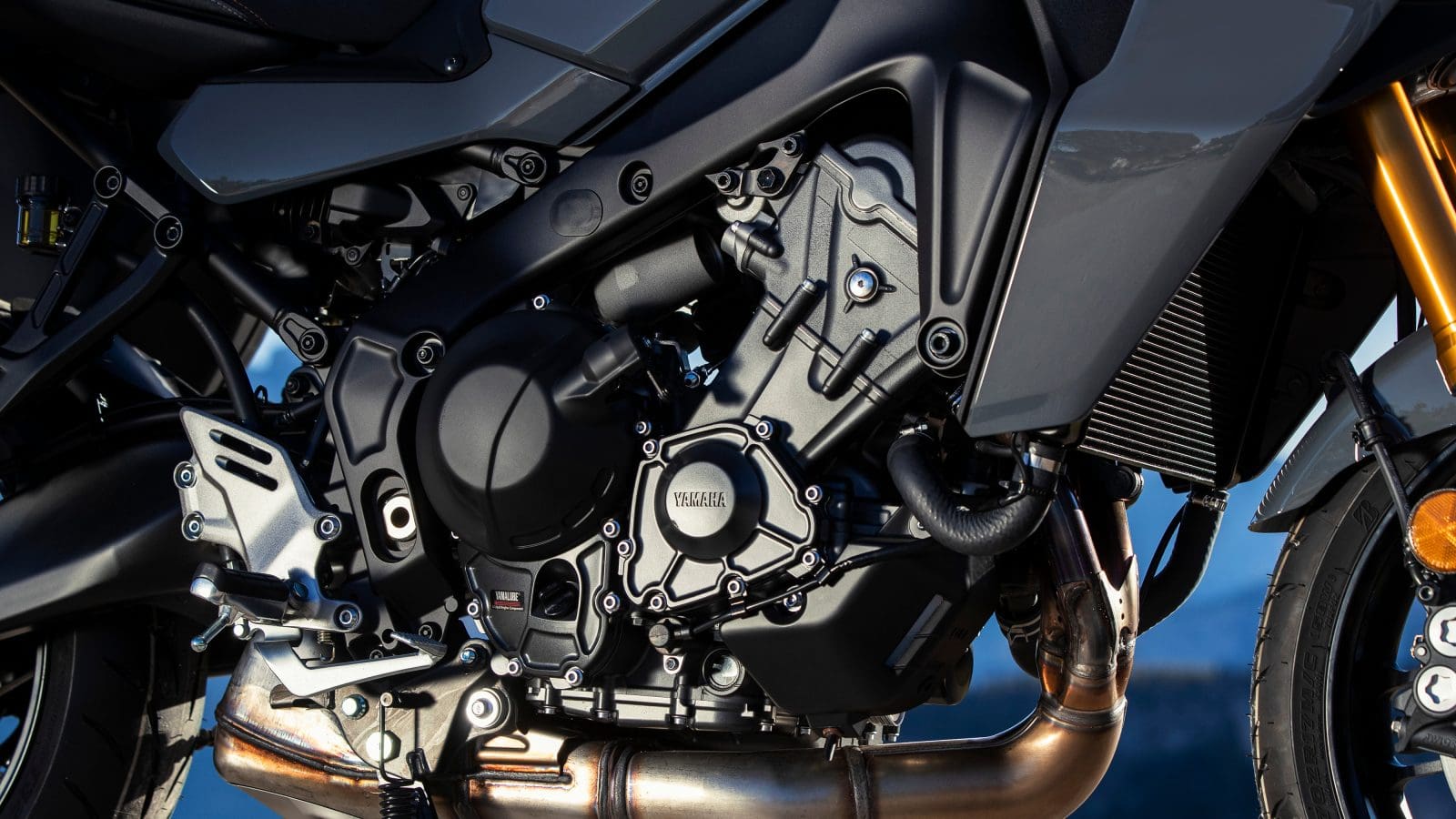
I find the Tracer’s power and delivery are close to textbook on the road; strong but not fierce with a lovely spread of torque, plus a lovely rasp from the exhaust when you grab a handful of throttle.

Like the three-cylinder engine, the suspension also remains unchanged and retains semi-active KYB units front and rear.
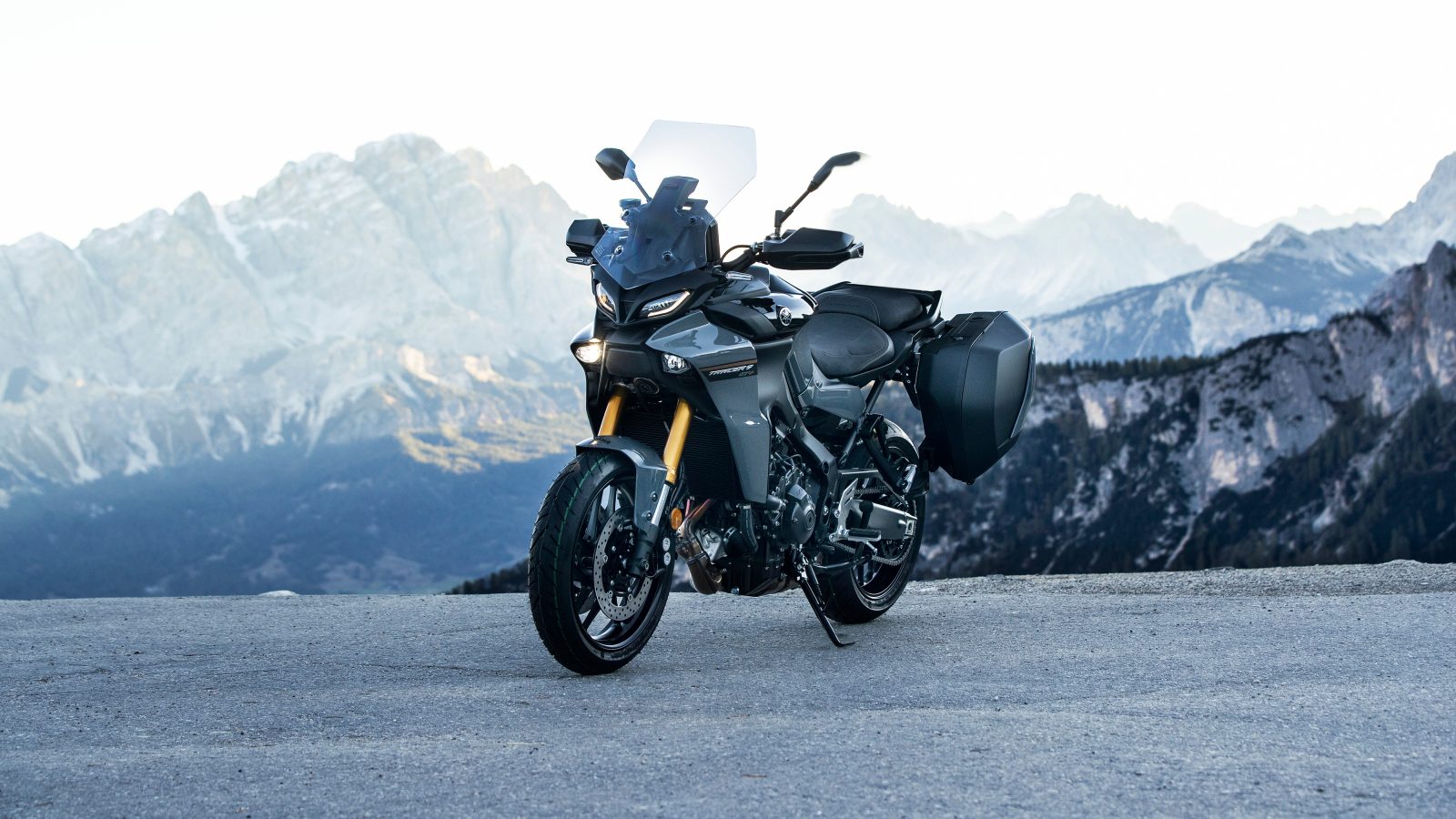
This was my first time on a Tracer with semi-active suspension and it didn’t disappoint. In many ways, it really shouldn’t handle as well as it does – this is a middleweight sports-tourer after all – but flick into Sports mode and the suspension and chassis deliver an exciting ride.

With some semi-active suspension systems, vital rider feeling is taken away, but feedback from the KYB set-up is first-rate for this type of bike. I rode it fast and slow, smoothly and aggressively, and had undistracted fun on outstanding roads throughout. In terms of handling, the new GT+ is certainly hard to fault.
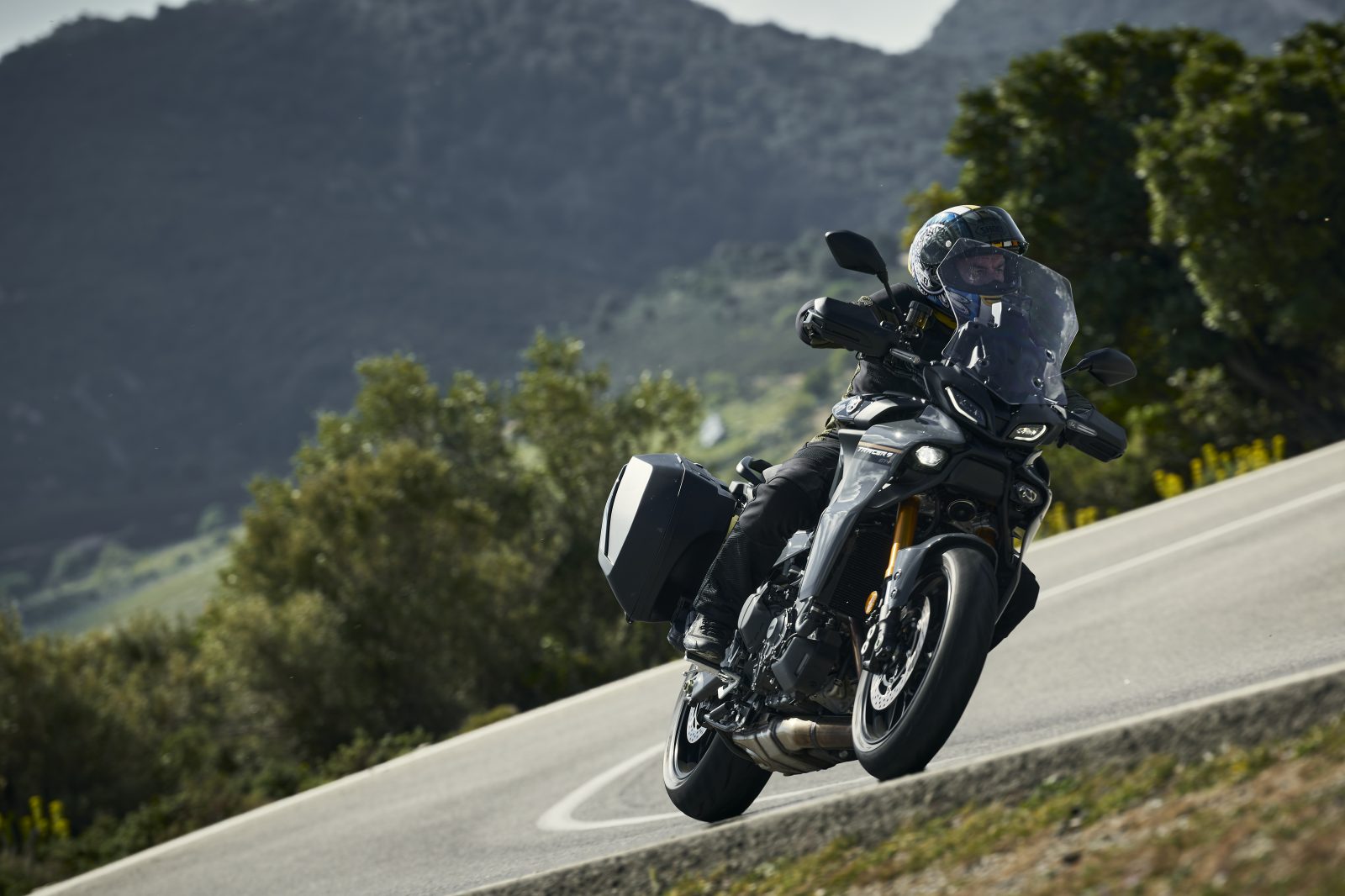
In the perfect conditions, the Bridgestone T32 tyres warm up quickly and offer great grip and only enhance the Tracer’s intrinsic feedback. As expected, there are boundaries to the sporty side of this sports-tourer; the ’pegs will eventually touch in the softer, more compliant Street or Rain modes, especially with a heavy rider onboard, but in Sport mode the GT+ was almost as happy to carry corner speed as its naked MT-09 sibling is.
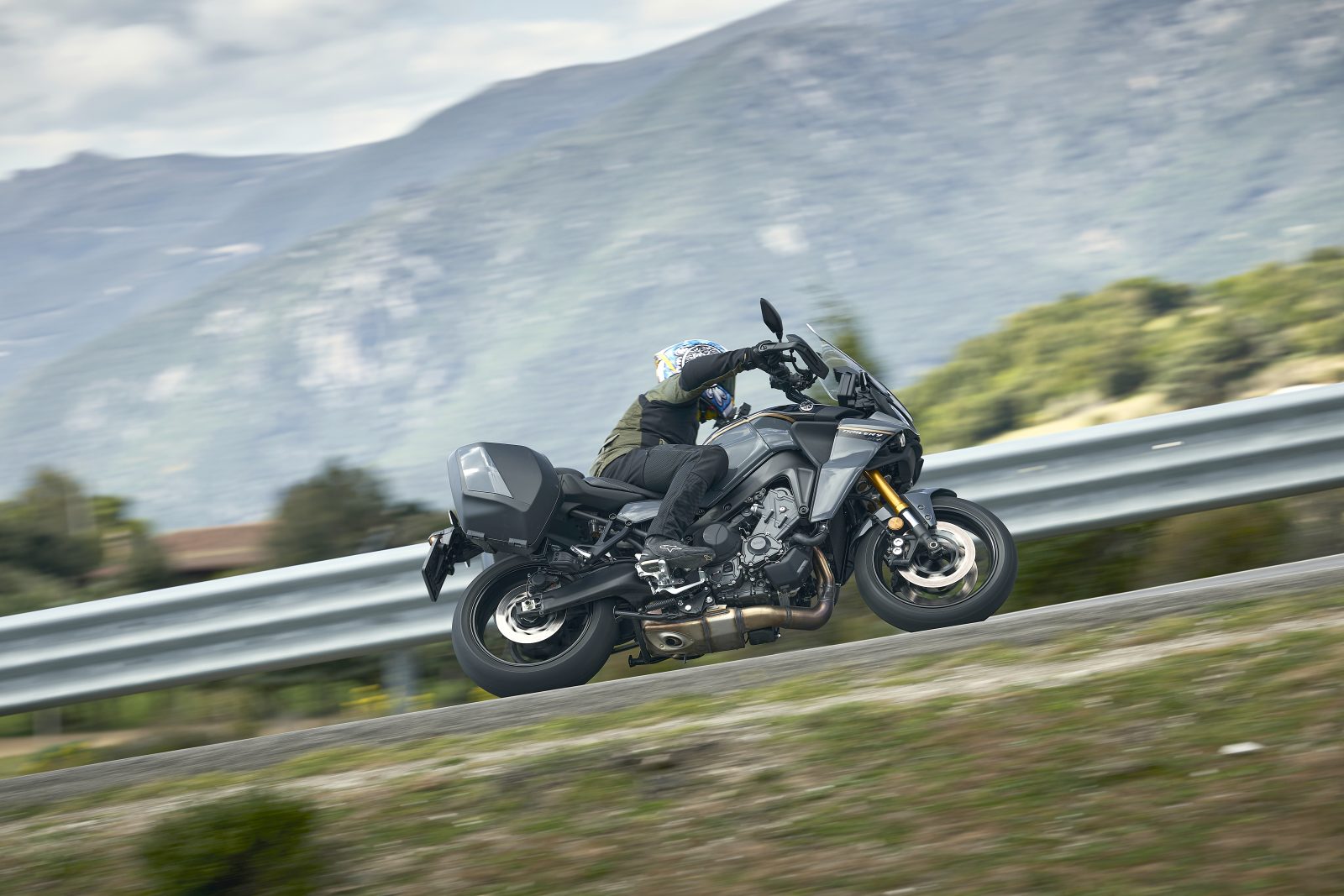
Not unlike the outgoing model thus far. But crucially, with the GT+, Yamaha has installed radar technology for the first time, which brings Adaptive Cruise Control (ACC) and the world’s first Radar Linked Unified Braking (RLUB) system. Keen to demonstrate its new tech, Yamaha treated us to a decent motorway blast to test both systems as well as the functionality of the new seven-inch TFT dash and switchgear (which loses the unloved ‘wheel’ from the right ’bar).

The ACC works by maintaining a selected gap of approximately one to two seconds between you and other traffic users, increasing or decreasing the bike’s speed automatically depending on the length of gap you have chosen. If the cruise speed is set to, say, 120km/h, and the GT+ approaches a slower vehicle doing 100km/h, the bike will automatically reduce speed by utilising engine braking or activating the brakes if required.
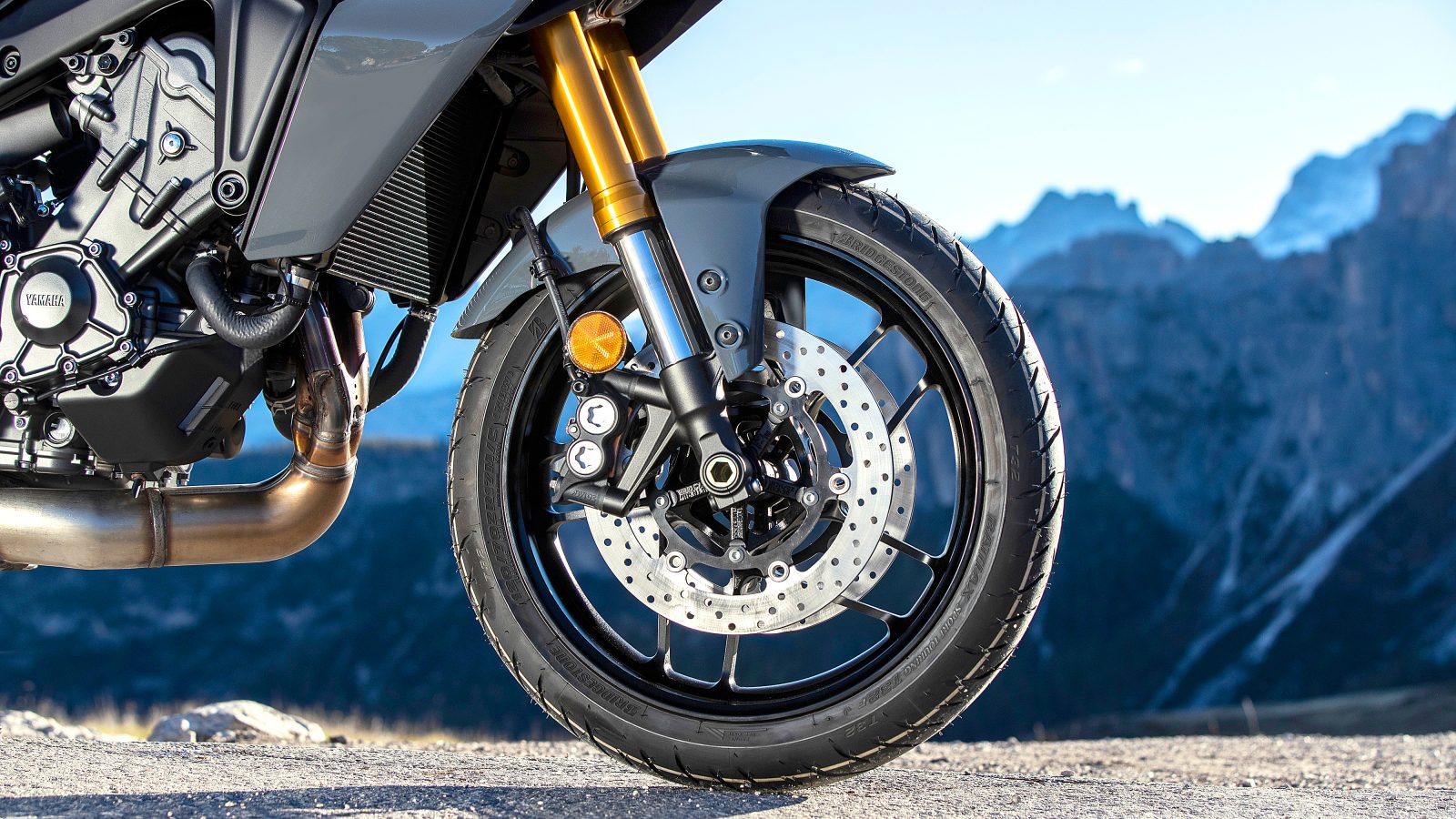
The ACC takes data from the IMU and adjusts its response to a changing gap depending on the bike’s degree of lean angle. Additionally, as the suspension is semi-active, when the ACC accelerates or decelerates it adjusts the settings to reduce pitch or squat to maintain stability.

You can increase or decrease the distance between you and other road users, which is useful in iffy conditions. You can also raise your speed in 1km or 10km increments and there is even the very clever Passing Assist, which smooths the acceleration when you indicate from lane two to three and the radar can see the road ahead is clear.
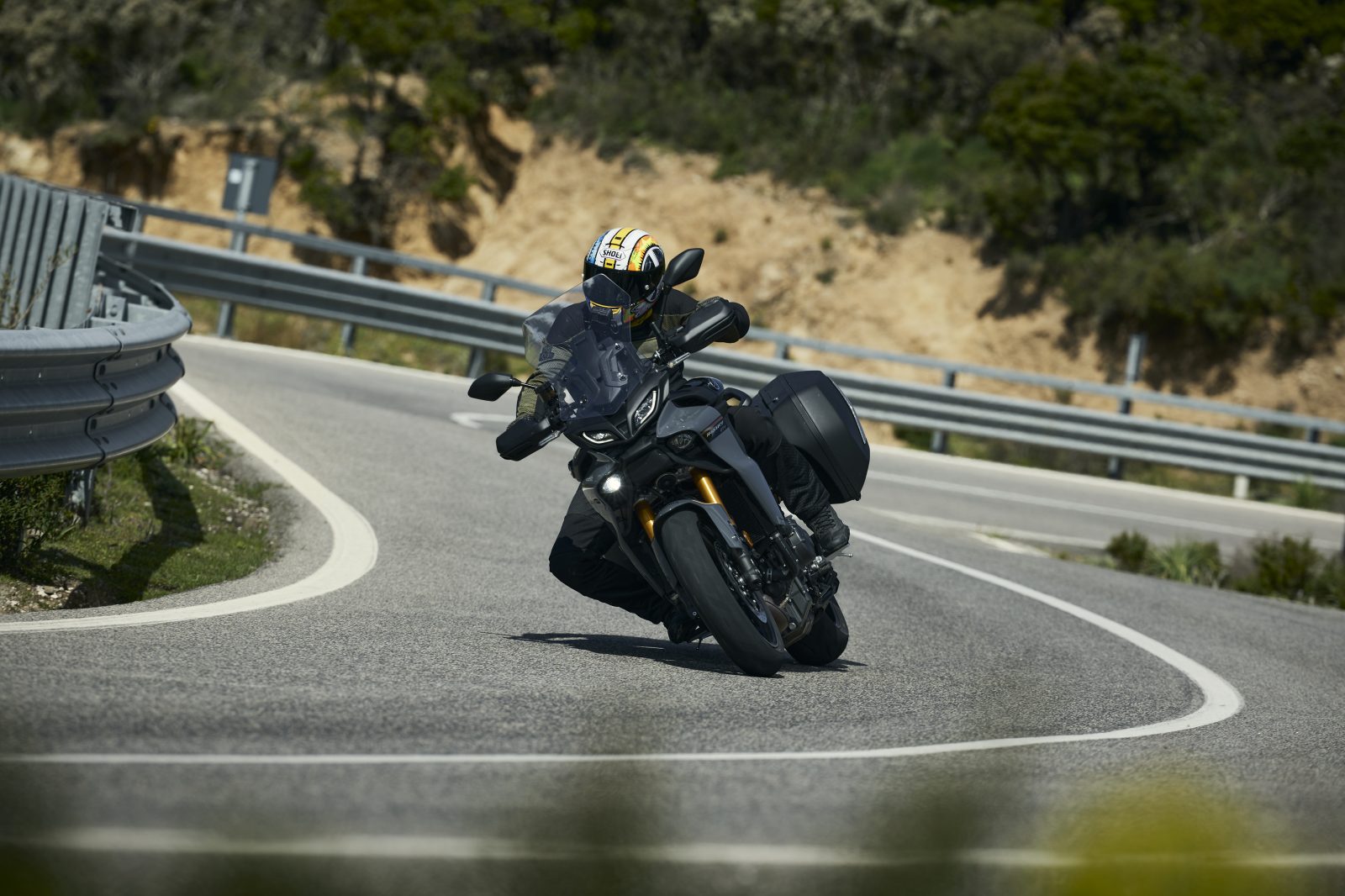
I’ve experienced similar radar systems previously and this new Yamaha system is one of the finest. It’s easy to understand and use, while the new colour dash and new switchgear enable intuitive navigation, unlike the old dash and Yamaha wheel. Once you’ve experienced the system it becomes both addictive and second nature, helping to make long-haul touring effortless and less fatiguing.
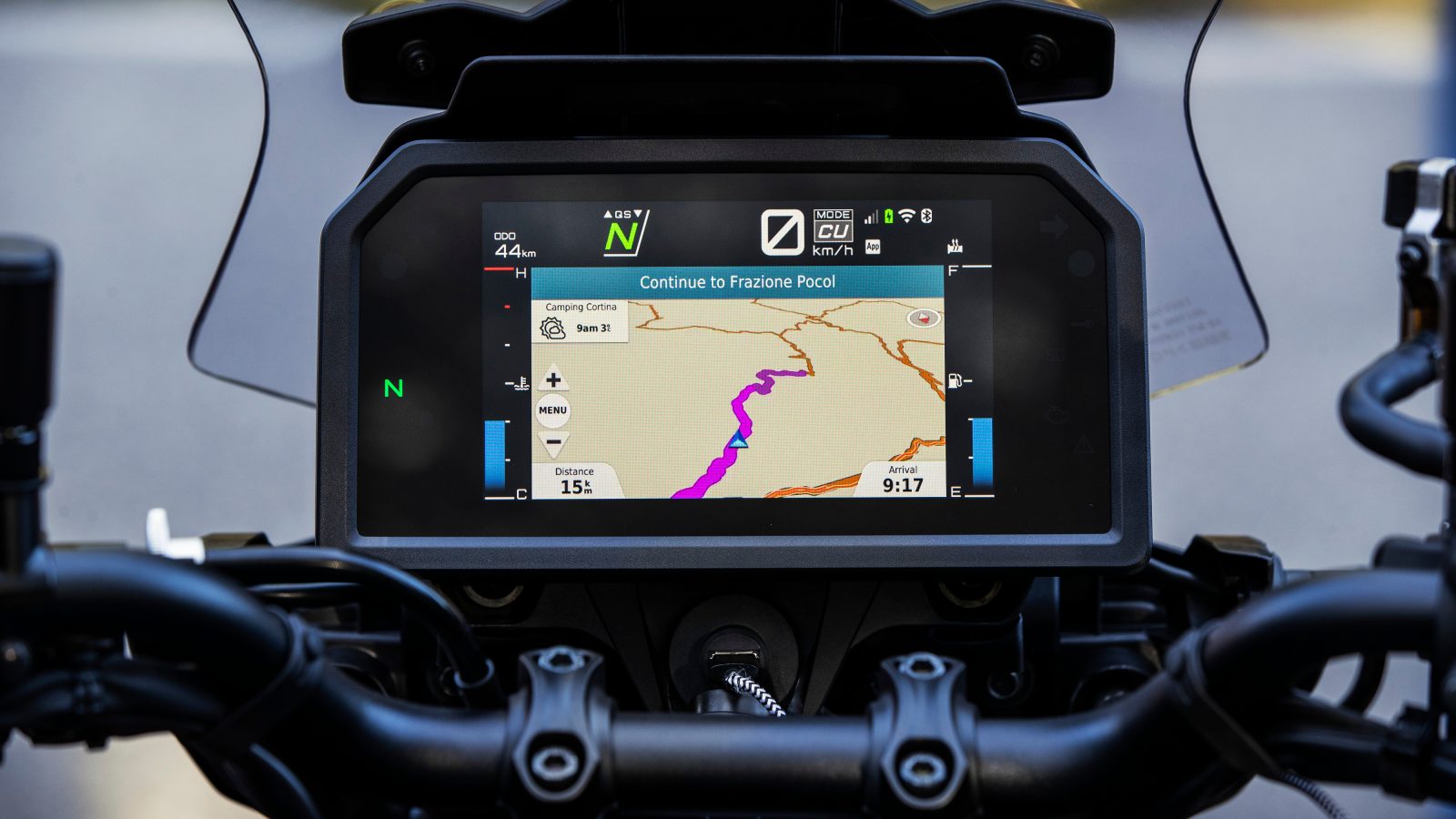
Sadly (or not) I didn’t get the chance to try the world’s first Radar Linked Unified Braking System, despite giving it my best go. The sophisticated system acts as a backup to the lean-sensitive ABS, using information from the radar to optimise very hard braking.
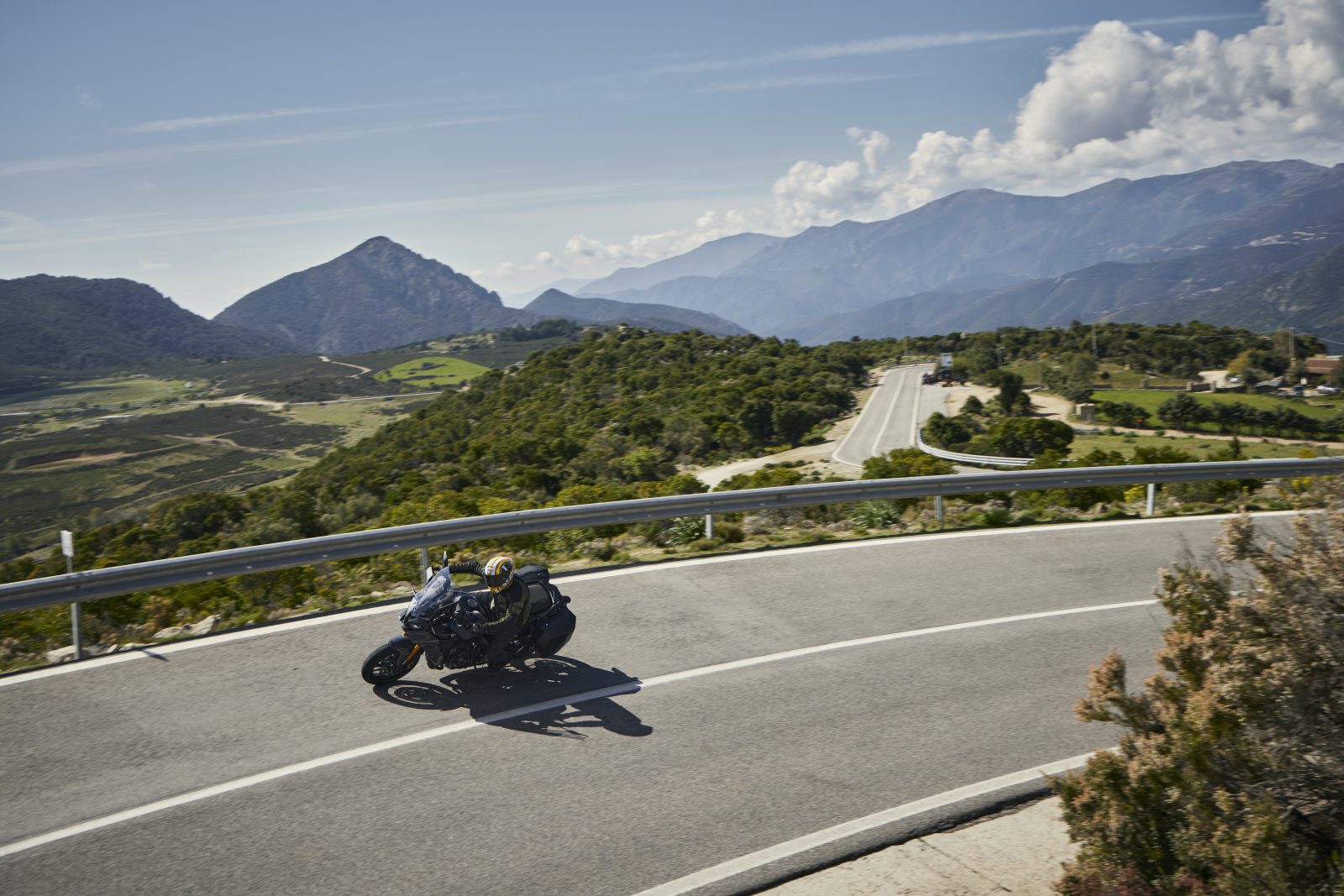
Put very basically: a kangaroo wanders without warning into the road and you, the GT+ rider, obviously apply the brakes as hard as you dare. The radar can see you are approaching skippy at speed, at the same time it is also receiving masses of other critical data like brake pressure, wheel speeds, fork dive, lean angle, and even how much grip the bike has (has the ABS chimed in in yet?). Within a fraction of a second, it calculates if it can assist and whether the GT+ can brake more to avoid a head-on with the roo.
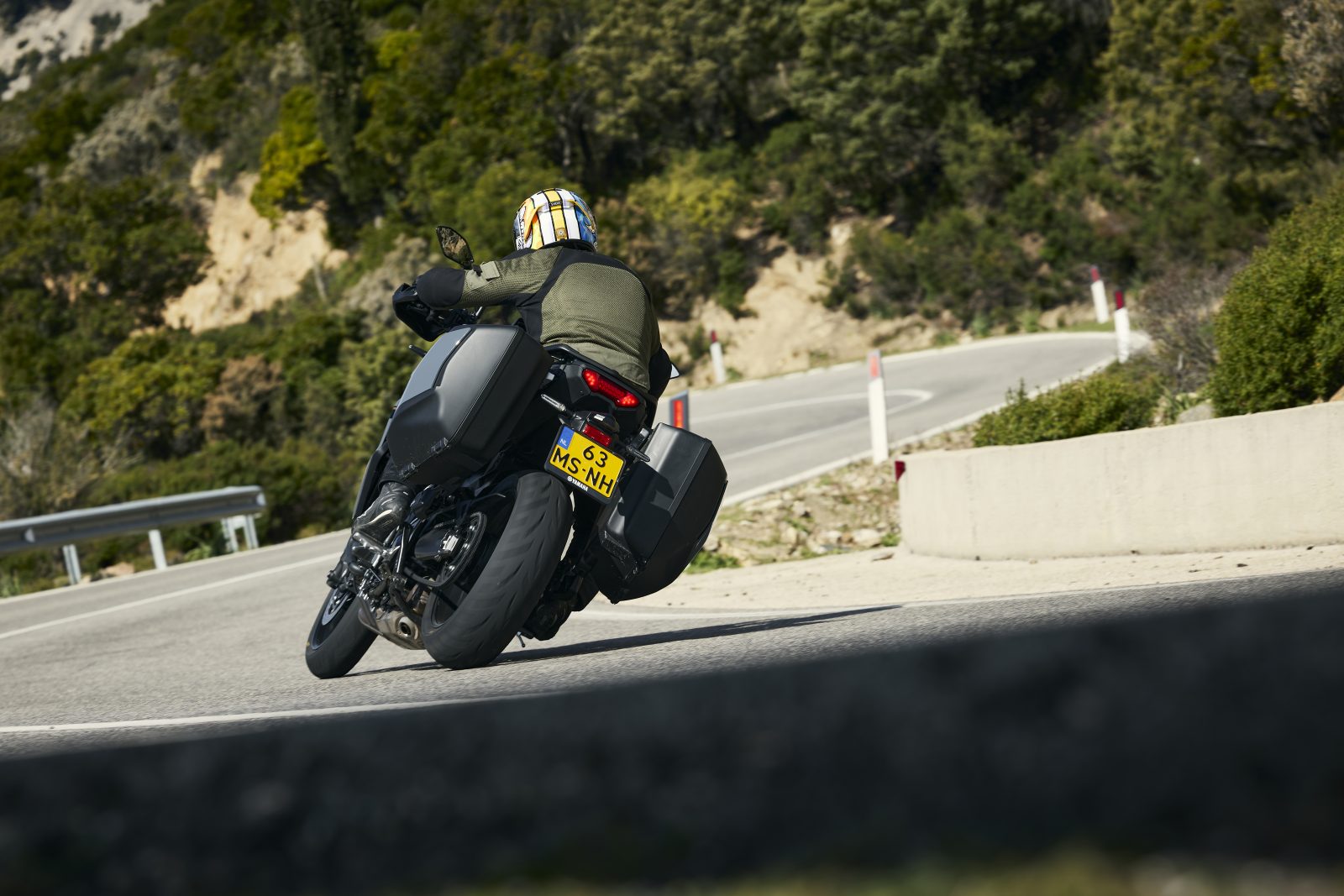
If you’re applying 50 percent brake pressure the system might add another 10 percent as it knows all the parameters, and knows by taking data from all the rider aids like cornering ABS, how much harder the brakes can be used. The system only activates in an emergency to avoid a detected object and only acts if you’ve already applied the brakes yourself. It doesn’t work if you are simply braking heavily into a corner, for example. And if you brake hard enough or never encounter an emergency situation you may never feel or see the system working (it illuminates the dash when it does). Sadly an emergency situation didn’t arise for me – must try harder.
The level of new tech on the Tracer 9 GT+ is extremely high for this type of bike and makes it the most advanced Yamaha sports-tourer to date. As well as ACC and RLUB, there’s that smart and genuinely helpful quickshifter and semi-active suspension, the new, high-luminosity dash has three layout options, is enabled for full-map integrated Garmin Navigation and, via Yamaha’s MyRide app, full connectivity with your phone, too. Its new, backlit switchgear is far simpler to use than the older bike’s, while cornering LED headlights, a centrestand, heated grips and 30-litre panniers that can take a full-face helmet and operate by the same ignition key, help make this sports-tourer look like extremely solid and impressive value for money.

You can ride away on a standard GT for $24k and with the addition of the extra tech like adaptive cruise, the flash dash and the new quickshifter you’ll need to fork out $27,599.00 for the GT+. For a midsized tourer, it doesn’t sound cheap but you can certainly see where the money has gone.

Yamaha already has an excellent bike in the Tracer 9 GT and all of its key attributes have carried over to the GT+. The lovely-sounding CP3 triple is still a beautiful combination of power, torque and character. The handling, especially for a bike in the sports-touring class, is reassuring while the ride can be quickly switched between one of all-day compliance, even commuting and comfort, to responsive sports-naked.

For 2023 Yamaha has made that bike even more tempting with an abundance of technology. Adaptive Cruise Control and Radar Linked Unified Braking System are the standouts and make both touring and everyday riding that little bit easier and safer.

When you start to add up all the bonuses draped on the GT+, including standard equipment like an adjustable seat, adjustable ’bar and ’peg positions plus a huge pair of panniers, it’s a superb all-around bike with plenty of tech, no doubt.
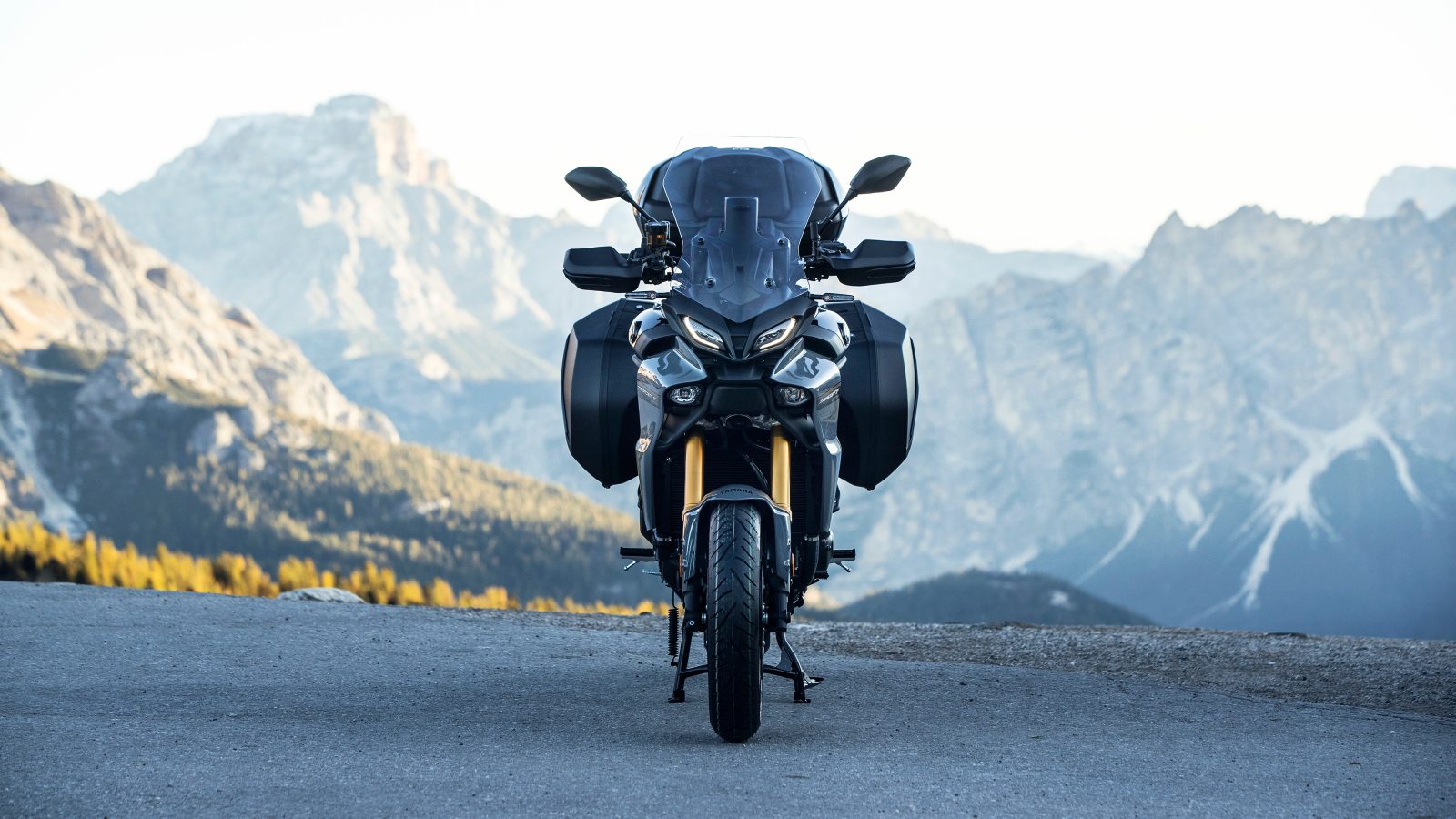
The looks aren’t jaw-dropping and some may want more power and, if world-first tech isn’t high on your priority list, then there are plenty of other really capable options.
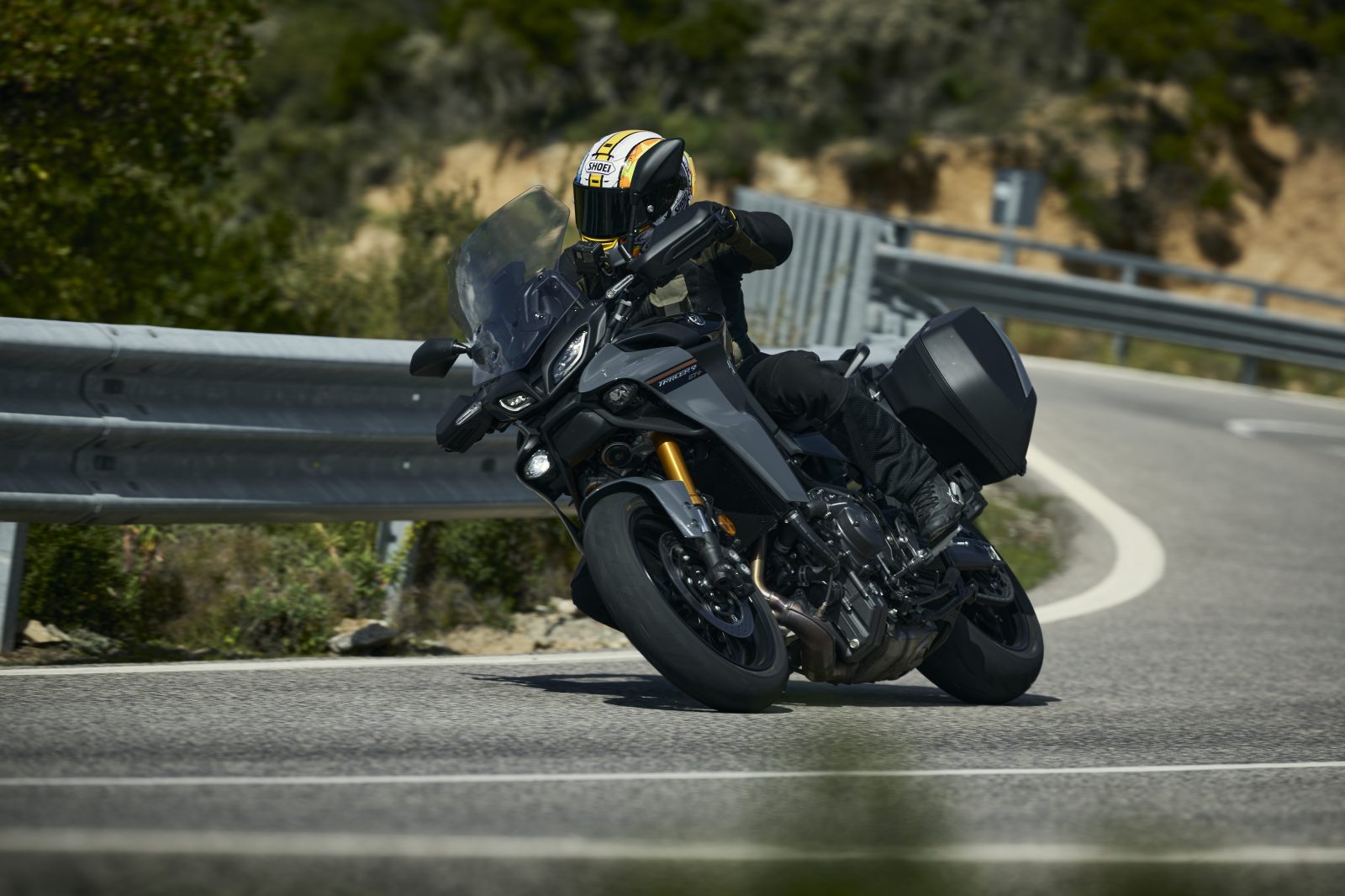
But if it’s priced right, and you value the convenience and safety of the latest tech, then there are probably few bikes that are better.
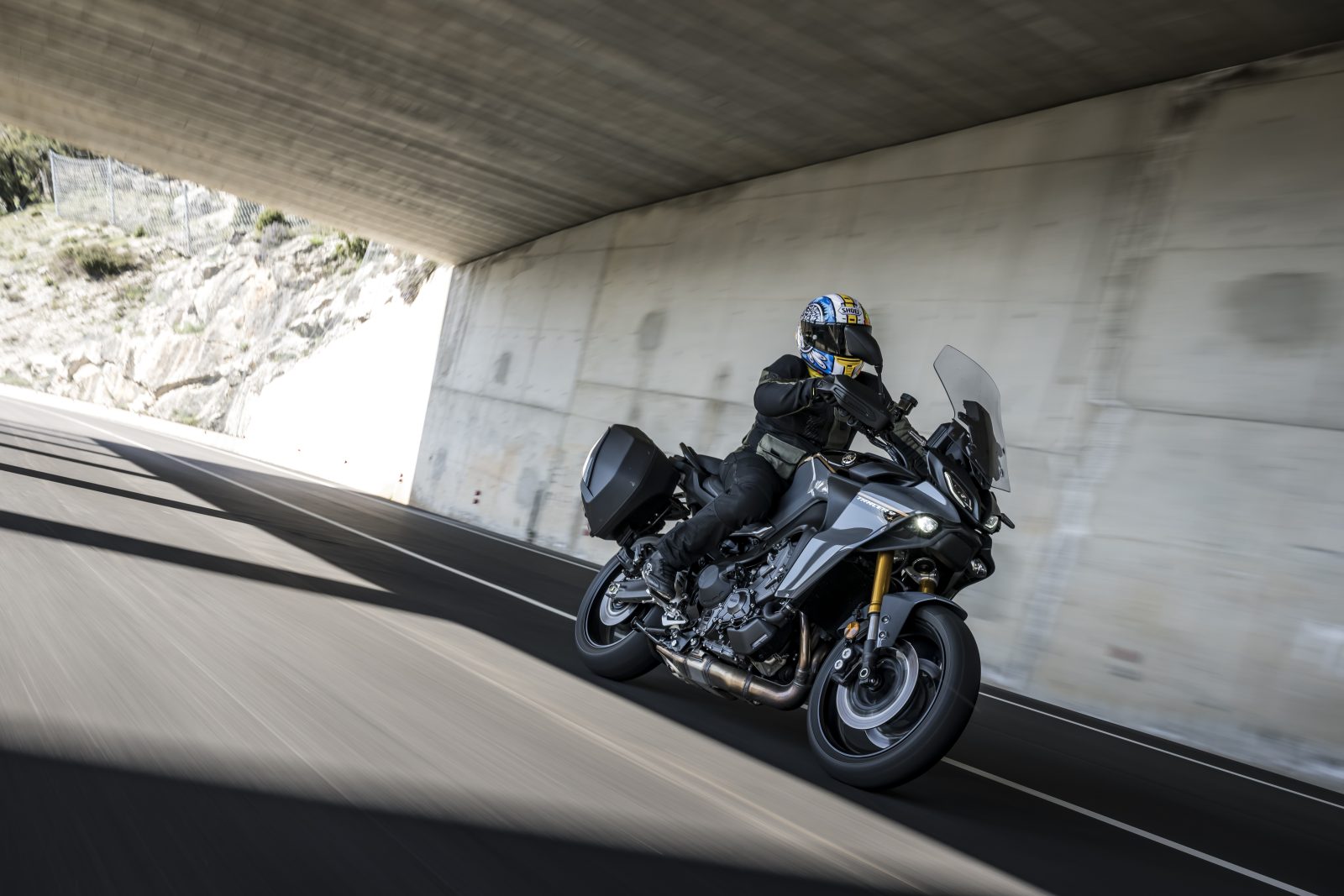
Test Adam Child + Photography Ant productions
